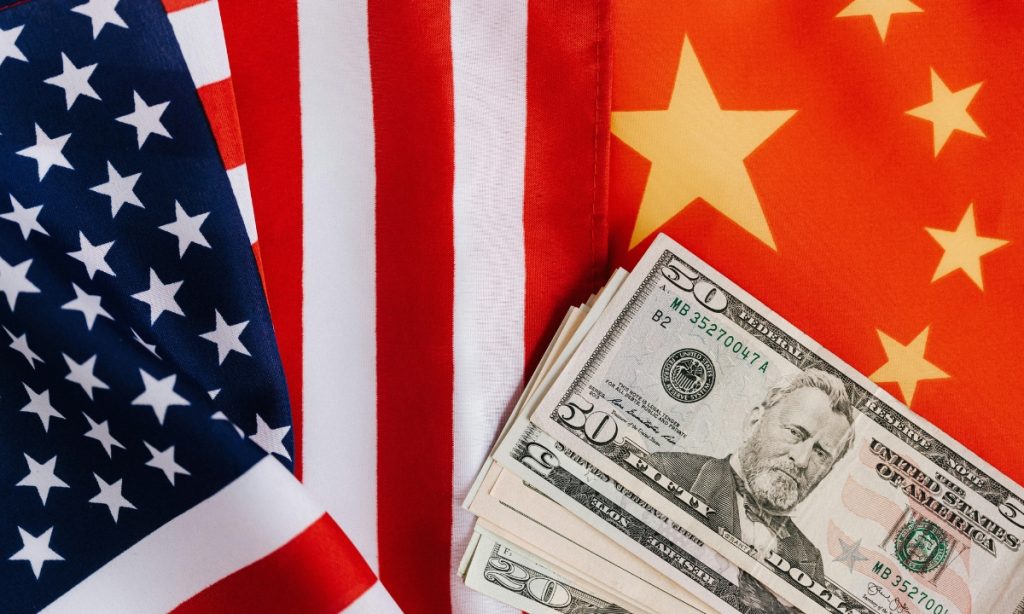Table of Contents
Introduction
U.S.-China rivalry has emerged as the defining feature of 21st-century global power politics, where technological supremacy has become the new battleground for influence and security. The United States and China — the two leading economic and military powers — are locked in a fierce struggle for dominance over the transformative technologies shaping the future: Artificial Intelligence (AI), 5G networks, and quantum computing.
This competition is not merely an economic race but a profound manifestation of “techno-nationalism,” in which technological innovation is directly linked to national security, geopolitical influence, and ideological leadership in the evolving international system.
1. The Concept of Techno-Nationalism
Techno-nationalism refers to the belief that a nation’s technological capability is integral to its economic security, political sovereignty, and military strength.
- In this framework, technology is viewed as a strategic resource, not a neutral commodity.
- The U.S.–China rivalry shows how nations now weaponize technology through trade policies, cyber espionage, export controls, and alliances.
CSS Analytical Note:
For CSS, define this term clearly — it’s a modern extension of realism, where states compete for power in digital domains just as they once did in land and sea.
2. AI (Artificial Intelligence): The Core of Strategic Competition
a. U.S. Approach
- The U.S. leads in AI research and innovation, driven by tech giants like Google, Microsoft, and OpenAI.
- AI is central to Washington’s defense modernization through projects like the Joint Artificial Intelligence Center (JAIC) and Algorithmic Warfare Cross-Functional Team (Project Maven).
- The U.S. emphasizes ethical and democratic AI frameworks to counter authoritarian applications of technology.
b. China’s Strategy
- China’s 2017 “Next Generation AI Development Plan” set a goal to become the world leader in AI by 2030.
- Beijing integrates AI into surveillance, governance, and military modernization — e.g., facial recognition, predictive policing, and autonomous weapons systems.
- The People’s Liberation Army (PLA) seeks “intelligentized warfare,” using AI to enhance command, control, and decision-making.
c. Strategic Implications
- The AI race is about more than innovation — it’s about who defines global norms and data governance.
- The U.S. fears that China’s state-driven model will export digital authoritarianism through technologies used for social control and censorship.
3. The 5G Rivalry: Infrastructure of the Digital Age
a. China’s Lead — Huawei and Global Expansion
- China’s Huawei became the world’s leading 5G equipment provider, offering faster and cheaper solutions to developing countries.
- The U.S. accused Huawei of espionage risks, claiming backdoors in its systems could be used for Chinese intelligence gathering.
- Washington responded with sanctions, export bans, and diplomatic pressure on allies to exclude Huawei from their 5G infrastructure.
b. U.S. Countermoves
- The U.S. promoted alternatives like Open RAN (Open Radio Access Network) and collaboration with allies (Japan, South Korea, Europe) to build secure networks.
- The Clean Network Initiative (2020) aimed to ensure global digital ecosystems free from “untrusted vendors.”
c. The Global Divide
- This 5G struggle created a technological bipolarity, with countries pressured to choose between U.S.-aligned or China-aligned digital ecosystems.
- It mirrors the Cold War containment logic, but in cyberspace rather than nuclear arms.
4. Quantum Computing: The Race for Strategic Advantage
a. Why It Matters
Quantum computing represents a paradigm shift in computational power — potentially breaking current encryption systems and giving its possessor unprecedented intelligence and defense capabilities.
b. China’s Achievements
- China launched the Micius Quantum Satellite (2016), achieving secure quantum communications — a world first.
- Chinese researchers have made breakthroughs in quantum supremacy experiments, surpassing classical computers in specific calculations.
- The Chinese government invests billions through its National Laboratory for Quantum Information Sciences.
c. U.S. Efforts
- The U.S. National Quantum Initiative Act (2018) boosted funding for quantum R&D across national labs and universities.
- Collaboration between IBM, Google, and DARPA has advanced quantum computing toward practical applications.
- The focus is on securing encryption systems before quantum decryption becomes feasible.
d. Strategic Implication
Control over quantum computing could mean dominance in cybersecurity, communications, and military intelligence — reshaping deterrence and surveillance models.
5. Broader Strategic Implications
| Dimension | U.S. Perspective | China’s Perspective |
|---|---|---|
| National Security | Prevent Chinese dominance in critical tech | Reduce dependence on Western technologies |
| Economic Power | Maintain innovation leadership | Drive growth through state-led innovation |
| Ideological Model | Promote open, democratic tech governance | Advocate for “cyber sovereignty” and state control |
| Alliances | Build tech coalitions (Quad, AUKUS, NATO) | Expand Digital Silk Road through Belt and Road Initiative |
6. Theoretical Implications
a. Realism
The rivalry reflects classical power politics in a digital domain — each state seeks technological superiority to ensure survival and influence.
AI and quantum technologies are the new “nuclear arsenals” of the 21st century.
b. Liberalism
Despite tensions, both economies are interdependent — U.S. companies rely on Chinese manufacturing, and China depends on U.S. software and semiconductors. This creates a paradox of competition and cooperation.
c. Constructivism
The competition also represents ideational conflict — a struggle over digital norms, values, and narratives.
The U.S. promotes an open internet and digital democracy, while China advocates cyber sovereignty and state control.
7. Global Consequences
- Digital Divide: Developing nations face pressure to align with either U.S. or Chinese tech ecosystems.
- Fragmentation of the Internet (Splinternet): The world risks splitting into competing digital blocs.
- Weaponization of Supply Chains: Semiconductor and rare earth supply disruptions have become strategic tools.
- Rise of Tech Alliances: Initiatives like AUKUS, Quad, and Chip 4 Alliance reflect techno-geopolitical cooperation among democracies.
Conclusion
The U.S.-China rivalry in AI, 5G, and quantum computing marks the emergence of a new “techno-nationalist” world order, where innovation equals influence and data equals power.
This competition will define the 21st-century balance of power — not through missiles or tanks, but through algorithms, networks, and qubits.
Stuxnet (2010): A U.S.–Israeli Cyberattack on Iran’s Nuclear Facilities

